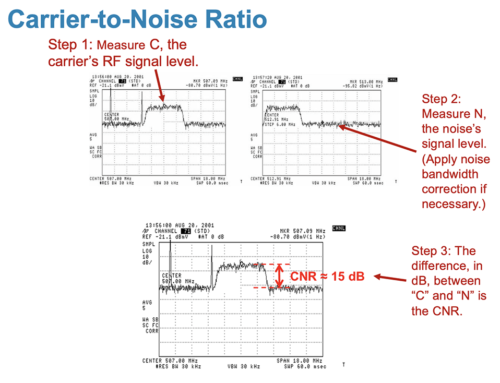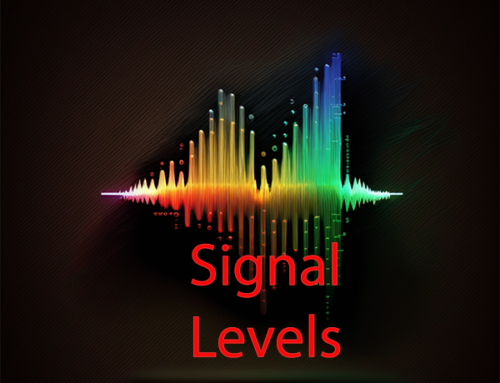CMTS Architecture :: I-CMTS vs. M-CMTS
How did we get to different CMTS architecture (s). Before we dive into bits, bytes and protocol, first we will discus some hardware. During the evolution of DOCSIS 3.0 there were a number of interesting interim steps along the way, shall we say building blocks, to arrive at a full blown D3.0 CMTSs. This left us with two fundamentally different system CMTS architecture(s) in production by CMTS vendors, Integrated and Modular CMTSs. It is important to understand these “CMTS architecture(s)” from a purchasing, operational and deployment standpoint as they have different requirements in some cases, some are better than others depending on the system layout.
Integrated CMTS (I-CMTS)
A DOCSIS Integrated CMTS architecture, or I-CMTS, is one that we are more accustomed to based upon DOCSIS 1.x and 2.0 architectures. That is a pizza box or chassis-based CMTS whereby all components necessary for DOCSIS 3.0 operation are integrated. The first CMTS vendor to gain full DOCSIS 3.0 qualification was CASA Systems, who provides a complete DOCSIS 3.0 CMTS and edge QAM (eQAM) [eQAMs will be described in a later blog] in a 1RU platform. The benefits of the I-CMTS architecture are its ease of deployment and lowered cost since all components are integrated. Seemingly there should be fewer points of failure since cabling and interfaces between external components are eliminated.
The I-CMTS can be found in Arris CMTSs. A strength of this architecture is the all-one solution, minimizing the amount of RF and IP combining in the headend, potentially reducing the number of points of failure. Though some of the weaknesses may arguably density and the inability to remotely locate DOCSIS DTI time sources [to be defined in more detail later] in hub sites, however these are fine selling points which I will leave to the Sales Engineers much more qualified to defend their products than I.
Modular CMTS (M-CMTS)
A DOCSIS Modular CMTS, or M-CMTS, is one in which DOCSIS 3.0 channel bonding is achieved by using a conventional CMTS and extending it with an eQAM, DOCSIS DTI time source, and Gigabit Ethernet (GigE) interfaces. The conventional CMTS line card provides a Local or Primary downstream, which contains all of the DOCSIS MAC layer protocol information necessary for DOCSIS-to-cable modem communication. The basics of this information contain timing Sync messages, Upstream Channel Descriptors (UCDs), Upstream Bandwidth Allocation Map (MAP) messages, Ranging messages, etc. The CMTS line card also provides the inputs for the upstream channels returning from the cable modems, which are then bound by the CMTS. The CMTS will usually have a specialized interface on it with a GigE connector that communicates directly with an eQAM. The eQAM provides the additional downstream bonded channels transmitted to the cable modems. Extremely accurate timing is maintained between the CMTS and the eQAM via a DOCSIS DTI timing reference. The eQAM and the CMTS can be remotely located and multiple DTI timers used and synchronized via GPS to ensure stable clock references. This enables the eQAMs to be located in hub sites where local video distribution is occurring while the CMTS remains at the headend or visa-versa. The modularity of the M-CMTS architecture is extremely advantageous in large systems. eQAMs can be re-purposed for DOCSIS or video as demand calls. The system scales well from four bonded channels, to eight and more as necessary.
Challenges that come with the M-CMTS architecture are on both the RF and IP fronts. In the RF realm, there is a vast amount of RF combining that must occur between the CMTS and the eQAM. At a minimum, headends / hubsites will require significant re-cabling. During this time, one must consider the potential for isolation issues that may occur between different downstreams and upstreams as combining is created for different node combinations. Isolation issues which occur at the source will not be resolvable at the subscriber premise.
In the IP realm, multiple potential failures are introduced with M-CMTS architecture. GigE interfaces are introduced between the CMTS to the eQAM, the CMTS to the back office, and the DTI timers to both the CMTS and the eQAMs. One should ensure that each interface has a redundancy and that the redundant path is fully tested under load prior to any live network failure. Often has been the case where a redundant path has been in place, but has never been tested. When the redundant path was actually exercised it failed to operate or failed to operate at full line rates. Again, the details of M-CMTS architecture advantages are best left to Sales Engineers and I recommend that you see your vendor for specific recommendations. For all Salesmen and Sales Engineers, please take my comments lightly, your welcome to send me your recommendations, but I have both I-CMTS and M-CMTS architectures and like them equally.
Upcoming events can be seen under Broadband Events. Previous events can be seen under the blog.
- If you watch on youtube please hit the subscribe button!
- Let us know what you think and remember to share!
- You can find slides at the bottom of the page and some on slideshare.
- Find out about events or articles by following us on Twitter, LinkedIn or Facebook too.
Also available on iTunes, Google Podcasts, Spotify, vurbl see podcasts “get your tech on”.





Brady,
I’ve had experience of both, although not naming vendors. When the idea of a M-CMTS was mooted, I didn’t fancy it. I still don’t. The idea was sold on the basis you could take some of the components and bunch them together-with only the RF parts being in the remote hubsites. This hasn’t happened-edge QAM’s for VOD are still being used for VOD, and the same is true for DOCSIS. I haven’t seen the over lap-yet.
I’m not saying the DOCSIS 3.0 I-CMTS is foolproof either-but I think that is down to the ever increasing tech that goes into these boxes. DOCSIS 1.0 was very simple when you look back at it-but insecure and easily hackable as well-that’s progress, I suppose 🙂
When I worked in telco circuit switches, the thing that always screwed you up were the external timing sources-drift will always be a problem-whereas if everything is on the same physical backplane, the problem goes away.
Everybody to their own-different vendors will do it different ways but I find it interesting a certain vendor has gone back on it’s promise not to build DOCSIS 3.0 cards for its “pizza box” chassis-all down to customer pressure. The easy upgrade path for D1 to D3, definetly, but not as lucrative for the sales people 😉
Stewart,
Thanks for feedback on your experience with I-CMTS vs. M-CMTS architectures. I would appreciate this type of feedback from users in live networks. I have experience in networks where trouble occurs and much more in the traditional 6-foot plant. The real test comes from those of you who are living the day-in day-out trials of these architectures in a production environment. So please continue to provide feedback.
-Brady
Brady,
I have had the pleasure to work with I-CMTS, M-CMTS, & hybrid-CMTS. I think that all the different designs have there place and uses and it can come down to many things that will decide your deployment. I know MSO’s that deploy M-CMTS & I-CMTS in the same systems and the reason being is capacity in some hub sites over others. I personally like the M-CMTS due to the raw number of QAM’s I have to combine with and the fact I can easily add more QAM’s without setting up more chassis’s and this can be a space saver in a crowded head-end. I even have seen customer go the hybrid route where they started with an I-CMTS and added M-CMTS to the CMTS to run additional QAM for other services. It’s not just about cable modems anymore there are so many different services running over the DOCSIS plant you need flexibility. At the end of the day it comes down to needs, budget, and design.
-Brian (Slimjim100)
We like I-CMTS for new introdution.
Hi Cable Guys,
Great tutorial Brady ! Thanks a lot, your website helps me so much.
In Europe, I see that a French Cable Operator begins to deploy the RF spanning option with MC20x20 instead of rolling new MC3G60 linecards out .
By using one DSport per Linecard to spreading four QAM channels over the other four DSports, we have at last 8 Downstream frequencies, but 4 primary downstreams only and 4 serving groups…
So what does this RF spanning solution stand for ?
It will be better to roll MC3G60 out. I understand that there is a cost-effective choice for the cable operator but the QoS for subscribers won’t be great…